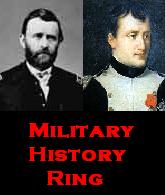 The King is Dead: Struggles for Power in King Arthur’s Court by Peer Sylvester and illustrated by Peter Dennis ($24.95)
The King is Dead: Struggles for Power in King Arthur’s Court by Peer Sylvester and illustrated by Peter Dennis ($24.95)
Two weeks ago, I received a copy of a new game by Osprey Games, a division of Osprey Publishing, known for their series of military history books. Osprey Games seeks to bring the reputation of the publisher to the world of tabletop and miniature gaming, which is growing in popularity (if the game Twilight Struggle on the Cold War is any indication). The game is called The King is Dead and if it is any indication of what Osprey is hoping to create for historical and fantasy games, future products should prove to be quite good.
The game is set in early medieval Britain, in the wake of Arthur’s death. Players assume the role of a member of his court seeking to gain influence over three factions in Britain: the Welsh, Scots, and Romano-British, all of which are vying for control of the various regions of the island. In the background is the constant threat of a Saxon invasion. While some of the game is wrapped up in the legends of Arthur, the historical aspect comes from the very real conflicts between Britons and the Anglo-Saxon forces during the late 5th and early 6th centuries A.D. According to Osprey’s page dedicated to the game:
The King is Dead is a board game of politics and power struggles in the dark Arthurian Britain for 2 to 4 players.
King Arthur is dead. The nation is divided. The Saxons are coming.
Now, more than ever, Britain needs a ruler who can unite the kingdom, but who will take the crown? Players work behind the scenes, marshalling their limited resources to give power to competing factions and gain influence within their ranks. Players owe loyalty only to themselves, however, are free to shift their allegiances as they see fit. Whoever has the most influence over the most powerful faction will rule Britain from the shadows. But be careful – too much infighting will give the Saxons an opening and put the entire nation at risk.
Its rules and mechanics are quite simple, but with a degree of strategy to keep it quite interesting. I test-played it with a co-worker Friday afternoon and we both found it enjoyable and fun. The length of play is between 30-45 minutes, making it great for players seeking a quick game that is still fun. The game board is very nice and mounted on cardboard, containing a map of Britain divided into eight regions.

The action is driven by cards, with each player having eight action cards they can play. There are also eight region cards that are shuffled and then placed next to each section on the board edge, numbered 1-8. Players then engage in power struggles related to that region, where they attempt to have more followers from one of the three factions (represented by colored cubes) than the other two in a region to gain control of that region for their faction. At the same time, players are removing a follower from the board and inviting them to their court. Power struggles for the regions end when both players consecutively pass and are decided by the number of followers in the region.
The action cards allow a player to move followers, settle followers, or garrison a region with followers. When a region falls under a faction’s control, the followers are moved into the common pool in the corner of the board and are no longer contested. If no faction has a majority when the power struggle ends, it comes under the control of the invading Saxons. This is something the players do not want to happen.
When all eight regions have fallen under a faction’s control, the game ends and whichever faction holds more regions and whichever player has more of that faction’s influence by the number of its followers in their court becomes the next King of Britain. However, if the Saxons control enough territory, the winner becomes the leader of the resistance.
Overall, this game is similar to another board game I have played with historical themes Tammany Hall, which I also enjoyed. The game is easy to play, requires a degree of cunning and strategy to both sway favor with the factions, while also preventing your opponent from gaining an advantage, or letting the Saxons invade. It can be played with 2-4 players and also has an advanced option for King Mordred’s followers.
With a nice board, a great theme, nice components, and a clever box with storage for the components, The King is Dead is definitely a great game and well worth its price of $24.95. It’s short playing time make it great for a lunchtime game with friends, and its relative simplicity makes it accessible to younger players too, as while the recommended age is 12 and up, I think with the right explanation of the rules and some patience, slightly younger kids could even play this game. If you are looking for a good gift for that gamer in your family, or someone that is interested in medieval Britain this holiday season, definitely add The King is Dead to your shopping list.
Download the game rules here.














 Chartrand, Rene. The Forts of New France: The Great Lakes, the Plains and the Gulf Coast, 1600-1763. Oxford: Osprey Publishing, 2010. Illustrations, Maps, Photographs, Index. 64 pp. $10.42.
Chartrand, Rene. The Forts of New France: The Great Lakes, the Plains and the Gulf Coast, 1600-1763. Oxford: Osprey Publishing, 2010. Illustrations, Maps, Photographs, Index. 64 pp. $10.42.

